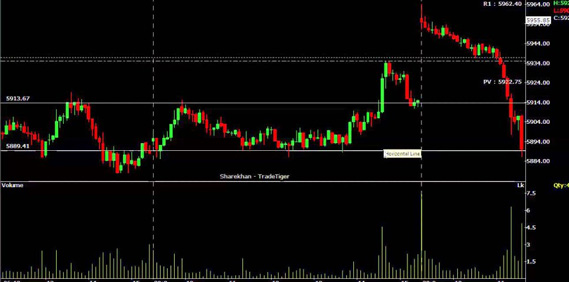- May 25, 2021
- Posted by: wadminw
- Category: Forex Trading

The mark-to-market gain or loss is unrealized but must be reported on the holder’s tax return. It’s recommended to use reputable tax and accounting services to handle these complex filings. MTM or mark-to-market in futures is a process of revaluing open futures contracts at the end of each trading day to determine the profit or loss that has occurred due to changes in the price of the underlying asset. The mark-to-market process involves calculating the difference between the contract’s entry price and the contract’s current market price and settling the profit or loss in the trader’s account. This is done to ensure that traders have enough margin in their Zerodha account to cover the potential losses from their open positions. Over-the-counter (OTC) derivatives, in contrast, are formula-based financial contracts between buyers and sellers, and are not traded on exchanges, so their market prices are not established by any active, regulated market trading.
The report displays Available Funds (to determine if you can put on a new trade) and excess liquidity (when depleted you risk liquidations). Mark-to-market losses are paper losses generated through an accounting entry rather than the actual sale of a security. For example, if the asset has low liquidity or investors are fearful, the current selling price of a bank’s assets could be much lower than the actual value. In personal accounting, the market value is the same as the replacement cost of an asset. A company that offers discounts to its customers in order to collect quickly on its accounts receivables (AR) will have to mark its AR to a lower value through the use of a contra asset account.
What Is Mark to Market (MTM)?
Although FAS 157 does not require fair value to be used on any new classes of assets, it does apply to assets and liabilities that are recorded at fair value in accordance with other applicable rules. The accounting rules for which assets and liabilities are held at fair value are complex. Mutual funds and securities companies have recorded assets and some liabilities at fair value for decades in accordance with securities regulations and other accounting guidance. For commercial banks and other types of financial services companies, some asset classes are required to be recorded at fair value, such as derivatives and marketable equity securities. For other types of assets, such as loan receivables and debt securities, it depends on whether the assets are held for trading (active buying and selling) or for investment.
We will now move on to look at those controls which validate the profit and loss (P&L) generated from existing positions, which is known as mark-to-market (MTM) or market moves P&L. Two reference values are available – ₹101.5 as the previous day’s close, i.e. 3rd day’s close, and ₹102 as the price at which the position was squared off. The sum of the daily MTM leads difference between mtm and p&l to the same P&L tally, i.e. ₹19,000 profit. From day 4 onwards, any changes in the contract price will not impact the P&L after selling the contract at ₹102. The profit of ₹4,750, adhering to the selling price of ₹102, will be credited to the trading account by the end of the day. A P&L statement shows the profit and loss of a company over a certain period.
Differences Between MTM And P&L: What You Need To Know
This table shows
the MTM, current day’s payments and PnL… all assuming values are
non-discounted, meaning that interest rates are zero or not counted. The value of something is also
known as the Mark-to-Market (MTM) which is defined in this FAQ as the present
value of all current (meaning today) and
expected future cash flows (or physical flows for physically settling
deals). It is common practice to add
back in any cash flow from the prior day when computing PnL, otherwise PnL
would be misrepresented by the amount of the cash that is paid/received. Mark-to-market losses occur when financial instruments held are valued at the current market value, which is lower than the price paid to acquire them. Other major industries such as retailers and manufacturers have most of their value in long-term assets, known as property, plant, and equipment (PPE), as well as assets like inventory and accounts receivable.
- Mark to market is an accounting standard regulated by the Financial Accounting Standards Board (FASB).
- While the above gives the overall P&L, let’s apply MTM for the same position as a table.
- The alternative method to MTM is historical cost accounting which values the assets based on their original cost.
- The market value assists a brokerage (e.g. IBKR) to request a customer to top up their margin account when prices dropped and the portfolio is getting overleveraged.
- When interest for bonds is paid after the close of the month, it is reflected in the Bond Interest Paid section.
- So if you are a trader and your
positions were worth $111 yesterday and today they are worth $105, then your
PnL for the day was -$6 and it was a loss.
It provides a more accurate appraisal of an organization’s current financial state based on momentary market conditions. It allows for measuring the changing value of assets and liabilities prone to fluctuations. Mark-to-market losses occurs when an asset is marked to market at a lower value than the price paid to acquire the asset. For instance, mutual funds experience mark-to-market losses when their NAV is higher one day and drops the next. Mark-to-market losses are paper or unrealized losses expressed through an accounting entry rather than an actual sale.
Positions and Mark-to-Mark Profit and Loss
The crises occurred because banks recorded the original price they paid for assets, making adjustments in the books only when assets were sold. If we compare mark to market accounting vs mark to model, guesswork plays a role in the latter, and values are assigned based on financial models instead of current market prices. The mark-to-market accounting method is primarily used in the financial industry to adjust the value of financial assets and liabilities, which tend to fluctuate over time.
Johnson & Johnson (NYSE:JNJ) Stock Holdings Lifted by Hyman … – MarketBeat
Johnson & Johnson (NYSE:JNJ) Stock Holdings Lifted by Hyman ….
Posted: Mon, 07 Aug 2023 11:36:43 GMT [source]
That said, mark-to-market accounting has been a part of the Generally Accepted Accounting Principles (GAAP) since the 1990s. Mark to market is an accounting standard regulated by the Financial Accounting Standards Board (FASB). This entity creates the accounting and reporting guidelines for businesses and nonprofits in the US. Under the FASB mark-to-market accounting rules “SFAS 157 Fair Value Measurements,” you can find the GAAP requirement to mark to market accounting, the definition of fair value, and how to correctly measure it.
Profit and Loss
The categories/buckets
typically appear as columns in a PnL Explained report. Note that the Account Balance is marked daily using the Gain/Loss column. The Cumulative Gain/Loss column shows the net change in the account since day 1. For example, homeowner’s insurance will list a replacement cost for the value of your home if there were ever a need to rebuild your home from scratch. This usually differs from the price you originally paid for your home, which is its historical cost to you. While the above gives the overall P&L, let’s apply MTM for the same position as a table.

1) Since this method uses the greeks (delta, gamma, vega, theta,
etc) and since many trading systems already calculate the greeks, this method
can be easier to implement than the revaluation method. So if the price moves $0.05 and the
option’s delta is $100 then the ‘Impact of Prices’ is $500. When the desk executes a new trade, the P&L generated on day one is ring-fenced and reported as new trade P&L. Hide Lot detail for positions, transactions and prior MTM – will consolidate transactions by order number. When interest for bonds is received after the close of the month, it is reflected in the Bond Interest Received section. If you buy a dividend-paying stock on margin and we lend that stock, you will receive Payment in Lieu of Dividend instead of the dividend.
Examples of Mark to Market
The gain will increase the “asset and marketable securities.” In a case of a loss, marketable securities would need to be decreased by the loss amount, and the loss will also be recorded on the income statement as an unrealized loss. The MTM Performance Summary in Base shows profit and loss (P&L) by underlying and asset class. The MTM calculations for the statement period show daily profit or loss – assuming all open positions and transactions are settled at the end of the day and new positions are opened the next day.

This section is sorted by currency, are translated to the base currency, and tie to the Mark to Market Performance Summary as well as the Cash Report. The Withholding Tax table displays Federal withholding tax on dividends, calculated for each currency based on tax rules for that country. Institutional customers with IBExecution services that pre-trade allocate options trades will have an Unbooked Transactions section. This section shows any price adjustments that were made to your account based on actual execution prices. The Transaction section shows all transactions segregated by asset type and currency. Account Information summarizes the account information with Customer type, trading permissions and base currency.
Before making any investment or trade, you should consider whether it is suitable for your particular circumstances and, as necessary, seek professional advice. In securities trading, mark to market involves recording the price or value of a security, portfolio, or account to reflect the current market value rather than book value. Companies in the financial services industry may need to make adjustments to their asset accounts in the event that some borrowers default on their loans during the year.
Mark-to-Market Accounting Method for Pension Accounting
The equipment, the space, and everything has gone through wear and tear, meaning that the original investment has likely depreciated, resulting in a lower value for the collectible collateral. On April 9, 2009, FASB issued an official update to FAS 157[35] that eases the mark-to-market rules when the market is unsteady or inactive. Early adopters were allowed to apply the ruling as of March 15, 2009, and the rest as of June 15, 2009. At the end of the fiscal year, a company’s balance sheet must reflect the current market value of certain accounts. Other accounts will maintain their historical cost, which is the original purchase price of an asset. MTM is also used in future accounts, helping traders meet those margin requirements.
- The crises occurred because banks recorded the original price they paid for assets, making adjustments in the books only when assets were sold.
- There are no open futures positions as each night the gain or loss for futures contracts settles into cash.
- From day 4 onwards, any changes in the contract price will not impact the P&L after selling the contract at ₹102.
- At the end of the fiscal year, a company’s balance sheet must reflect the current market value of certain accounts.
- The change in position value section explains the changes in your position value from the beginning of the period to the end of the period.
- In some instances, banks and other lenders will have to decide whether to extend the credit to those who aren’t able to pay them back.
Gains and losses in mark-to-marketing accounting are calculated based on fluctuations, whether day by day or over time. If an asset is valued daily, first, you need to calculate the change in value, which is the difference between the previous day’s price and the current day’s price. Another benefit of the mark-to-market accounting treatment is that it prevents banks from overextending loans. When a company seeks a loan, this method can determine the borrower’s current financial health. For instance, if a retail chain asks for a $1 million loan to establish a new location, looking at the historical value of its assets might be a dangerous route. Suppose they paid $600,000 to develop their current location five years ago.
Expand a shaded row to view the
trade details for that position (buys and sells on separate rows), including the date, time and whether the position
was bought or sold. If there are more than 10,000 trades, buys and sells will be summarized by report date. Not a financial advisor but personally, I don’t like P&L as it is not timely and reflects outdated value (e.g. masking paper losses). On the other hand, Mark-to-Market is biased and could be used wrongly (e.g. checking prices daily instead of long term investing).
Mark-to-market accounting can help banks and lending institutions determine the fair market of collectible collateral. In some instances, banks and other lenders will have to decide whether to extend the credit to those who aren’t able to pay them back. By knowing the actual market value, banks and lenders can make more informed decisions on whether it makes sense to extend a loan and by how much. Let’s go over the reasons why this accounting method is generally popular and well-regarded. The option cash settlements shows the details of your index options, which settle in cash and not stock. During the month we accrue interest each day, and when interest is actually posted to the account, the daily accruals are reversed.

